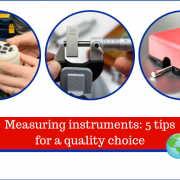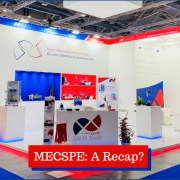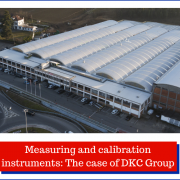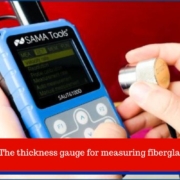Ultrasonic thickness gauge: Project PSC S.r.l Case Study
Are you looking for information on how to use an ultrasonic thickness gauge to measure the thickness of any given material reliably?
Read on to understand how you can accurately use the gauge, just like our client, Project PSC does.
What is an ultrasonic thickness gauge?
An ultrasonic thickness gauge is an electronic device that uses the emission and reception of sound waves to measure the thickness of a given material.
It comes in different sizes and has various functions.
Each sector requires one type rather than another, therefore it is important to choose the most suitable model for each need.

How does the ultrasonic thickness gauge work?
First, you need to know what you have to measure. Each material has a different internal sound speed, which means that sound travels through different materials at different speeds.
This is an essential part of calculating the thickness of a material, because the thickness is equal to the echo cycle time divided by the sound speed.
To accurately calculate the thickness, the device must know the speed of the sound within the material it is measuring.
Since this is specific to the material itself, it is important to set the device for the material you want to measure.
Let’s look at some of the most common materials and associated internal sound speeds.
Material Speed (m / s)
Aluminium 3040 – 6420
Brick 3600 – 4200
Concrete 3200 – 3700
Copper 3560 – 3900
Glass 3950-5000
Iron 3850 – 5130
Lead 1160 – 1320
Steel 4880-5050
Wood 3300-5000
After setting it up, the device is ready to measure the sample accurately.
The second step is to determine whether the surface you need to obtain the thickness from is covered by some kind of coating.
What is meant by coating?
Coating means any material that covers the surface and prevents direct contact between the probe and the surface.
Examples of coatings are:
Dirt
Dust
Rust
Paint
Hairspray, etc.
If you are using a Single Echo device (such as our SA8812 or SAUT160) the layers that cover the surface will cause a discrepancy with the measurements and will give you inaccurate results.
In this scenario, it is important to ensure that the surface is clean and that an insulating gel is used to form a direct connection between the probe and the surface. For devices that can use Echo-Echo and Multiple Echo methods (such as our SAUT310D-SW or SAUT500D-SW), coating is a minor problem and can be overcome.
Echo-Echo allows the ultrasonic thickness gauge to ignore a coating of up to 8 mm thick. The measurement process includes the device that produces an ultrasonic pulse, which is sent through the material you are measuring.
Timing begins when the pulse is initially emitted by the probe and ends when the return echo is detected, which reverberates through the material after bouncing off the bottom wall.
How do the different measurement methods work?
Single Echo is the simplest and as the name suggests, uses a single timing method to measure thickness. This requires a clean sample of the material, which can be difficult to find in many areas outside controlled test environments.
Echo-Echo and Multiple Echo use two and three timers respectively to eliminate the thickness of the coating and obtain an accurate result for the sample thickness.
The second cycle of the sound wave begins at the boundary between the coating and the sample.
This is the key factor to remove the coating from the measurement, because it means that time one and time two will be slightly different.
Multiple Echo has a third timing to use, which increases measurement accuracy when the coating is thicker.
For this, times two and three are usually equal or infinitely different, so that the hardware and computing software can eliminate the coating and record only the thickness of the sample.
PROJECT PSC SRL also uses ultrasonic thickness gauge
Among our numerous customers who use our thickness gauges , Project PSC Srl uses SAMA Tools name-brand for inspections and professional training in the field of non-destructive control.
Project PSC ensures great professionalism, seriousness and efficiency in training, engineering and consulting.
Inspections with the ultrasonic thickness gauge allows one to detect both superficial and deeper defects.
PSC Project Courses and Services
Project PSC is therefore a Center that deals with the training and certification of personnel involved in the execution of Non-destructive Investigations (CND) under the supervision of Bureau Veritas and ACCREDIA.

“Non Destructive Control is the determination of the physical condition of an object made in such a way as not to compromise the functionalities for which the object itself was built.”
ASNT(American Association For Non-Destructive Testing)
Courses are held throughout Italy, even directly on site, with personalized training plans.
It’s also a Testing Laboratory composed of level III technicians who perform preventive (non-destructive and semi-destructive) diagnostic investigations in the field.
So the aim is to detect defects and deficiencies, suggesting targeted interventions, allowing the customer to save time and money.
A summary, the activities carried out involve the following areas:
-
DIAGNOSTICS
In civil and industrial fields for the maintenance and control of buildings and plants.
-
SEISMIC
Non-destructive, semi-destructive and destructive tests for the characterization of materials and the definition of seismic risk.
-
TESTS ON STEEL
Non-destructive testing of welds and steel structures.
-
SECURITY
Safety checks of structural and non-structural elements.
Watch the video to learn more…
For precision and usability, Progetto PSC has chosen our SAUT310D-SW Ultrasonic Thickness Gauge model which also measures the thickness through paints and coatings.
It’s an innovative and efficient tool thanks to its high precision, exceptional ductility and ease of use.
Be like PSC Project and choose SAMA Tools for all your quality control needs!
Would you like more information or assistance?
If you are looking for information on a specific model of our ultrasonic gauges or would like to know more, write to sales@samatools.it












